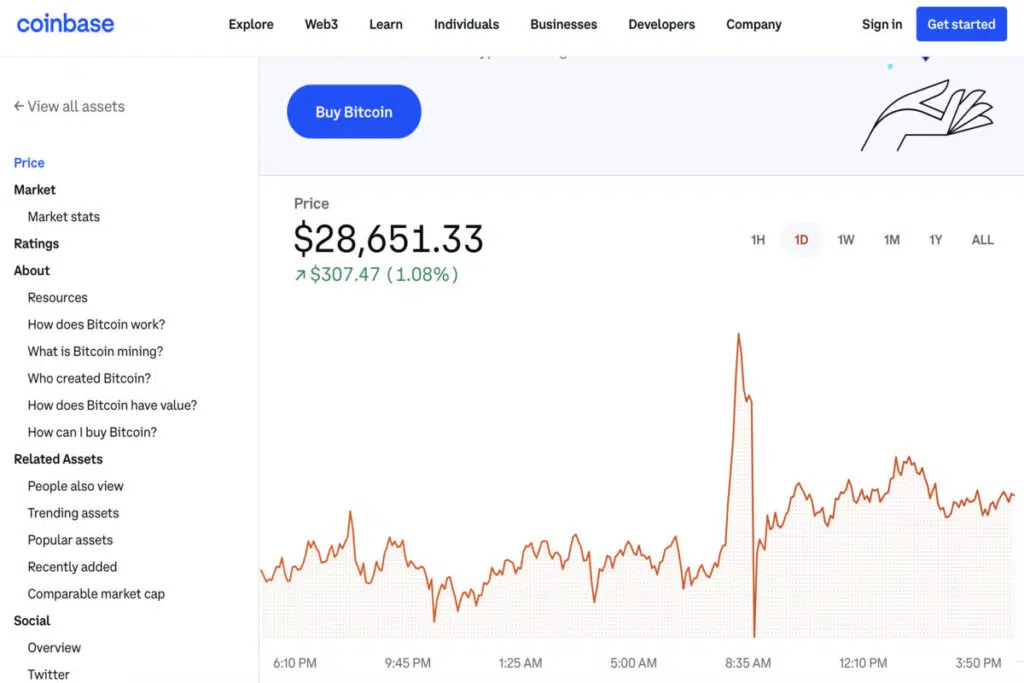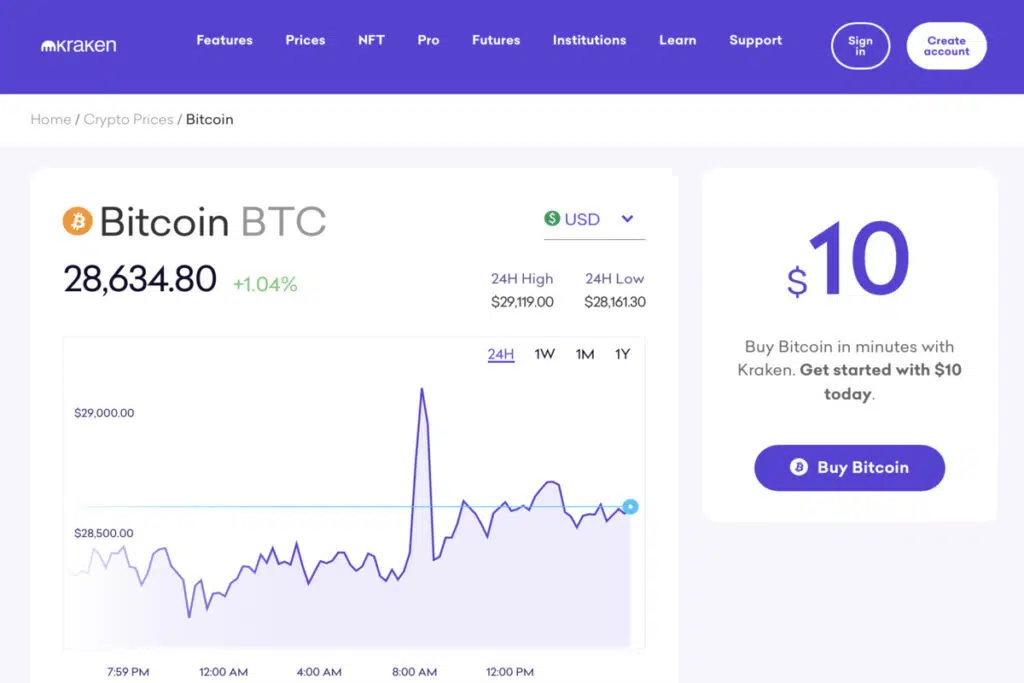Key Takeaways
- Crypto Arbitrage Trading; a popular trading strategy that involves buying low and selling high.
- Some risks associated with arbitrage trading are time sensitivity, huge trading fees, and slippage.
- The competition in arbitrage trading is sometimes intense; hence ensure you carry out your research and use the right trading platforms to stand a chance at making profits.
Crypto arbitrage is one of the several trading strategies in the cryptocurrency space. It simply involves buying low and selling high. It is one of the most popular trading strategies, and this is because you don’t have to be a professional investor with an expensive setup to excel at arbitrage trading. However, you must know cryptocurrency markets to get the most out of this strategy.
Crypto arbitrage trading involves buying low and selling high on exchanges and taking advantage of price differences. There are different types of arbitrage trading, which include: cross-exchange, triangular, statistical and spatial. However, time sensitivity, trading fees, and slippage are some of the risks associated with arbitrage trading. It’s advisable to do your research and use the right trading platforms to increase your chances of making profit.
In this article, we hope to help you understand the concept of Crypto arbitrage trading, outline and explain the types of arbitrage trading strategies, and some of the risks associated with arbitrage trading.
What is Crypto Arbitrage Trading?
To understand the concept behind crypto arbitrage trading, let’s perform a simple exercise:
Open two crypto exchanges on your devices and compare the price of Bitcoin.
At the point of writing, the price of Bitcoin (BTC) on Coinbase is $28,651.33, while the price of Bitcoin ( BTC) on Kraken is $28,634.80. Comparing these prices, you will notice a slight difference in the price. This difference in the price of Crypto across different platforms is the concept behind crypto arbitrage trading.


However, this concept applies to the crypto market; it cuts across other markets like Stocks, Commodities, and Metals.
Crypto arbitrage trading, in simple terms, can be defined as a trading strategy that involves buying and selling cryptocurrencies on different exchanges and taking advantage of price differences. It’s low-risk trading that doesn’t require any special expertise.
How Does Crypto Arbitrage Work
The concept of arbitrage is more complicated than buying low and selling high because factors like platform trading fees and hidden costs can turn a potential gain into losses. Furthermore, arbitrage trading requires fast execution of a trade, access to real-time market data, and sometimes advanced trading tools.
The competition in arbitrage trading is sometimes intense; hence it’s crucial always to research and use the right trading platforms to maximize your chances of making profits. To master the skill of crypto trading, read this article.
How does crypto arbitrage trading work?
Traders must quickly buy and sell an asset across platforms whenever they notice a price inefficiency. The only difference is that cryptocurrency arbitrage traders focus on crypto assets like Btc or Eth. pic.twitter.com/5v1zX6f9IQ
— Astaroth 🔱 | tD (@AstarothTrader) March 23, 2023Types of Crypto Arbitrage Trading
- Cross-Exchange Arbitrage
This type of arbitrage involves only two exchanges (The one you are buying from and the one you are selling to). It involves buying cryptocurrency at a low price on a crypto exchange, transferring it to another exchange, and selling it at a higher price.
Cross-exchange arbitrage is one of the most used types of arbitrage trading, but it has a few setbacks. One of the common setbacks is the transfer fees incurred during crypto transactions (withdrawal/deposit). One way to get around this huge transfer fee is by buying and selling assets simultaneously, and this is only possible if you have assets on both exchanges.
To understand how this works, let’s consider this scenario :
Assume you have $27,000 worth of USDT on Kraken and 1 ETH on KuCoin. Assume the price of ETH on Kraken at the time of the exchange is $27,000, but $27,500 on Kucoin. You then buy Ethereum on Kraken using the $27,000 stablecoin ( USDT) and then sell the Ethereum on Kucoin for $27,500 and then make a profit of $500.
This transaction will be completed without the need to pay for withdrawals and deposit fees.
- Triangular Arbitrage
This form of arbitrage trading is done on a single exchange and involves using three different cryptocurrencies to take advantage of the price differences between them.
Consider a scenario where you have assets like Ethereum, Solana, and Cardano (ADA). Two of these cryptocurrencies can be undervalued on the exchange, so the trader decides to take advantage of this situation to get more Ethereum. So they sell their Ethereum for Solana, then use that Solana to buy Cardanao, and then end the process by repurchasing Ethereum with Cardano. The trader ends up with more Ethereum than when they first bought Solana.
Interestingly, no withdrawal or transfer fees are not incurred because this is done on the same exchange,
- Statistical Arbitrage
It’s a type of arbitrage trading that involves using mathematical models to trade cryptocurrency. This type of arbitrage leverages arbitrage bots to trade hundreds of assets at the same time. The bot operates via mathematical models to predict if a trade will be on the winning or losing side and then proceeds to carry out a trade based on this prediction.
- Spatial Arbitrage
The concept behind spatial arbitrage is the differences in the price of an asset based on the geographical location of each exchange. The demand for assets is the primary factor that drives spatial arbitrage. Traders can take advantage of this arbitrage by buying Crypto that is of lower demand in a country but of high demand in their country and then proceeding to sell on local exchanges.
Risks of Arbitrage trading
Below are some of the risks associated with arbitrage trading:
- Arbitrage opportunities are time sensitive
Speed is the critical feature of successful arbitrage trading. Hence, to maximize your chances of making profits, you need to be very fast in the execution of your trades.
Factors that affect the speeds of transactions are : The Speed of the blockchain, Anti-Money Laundry Checks of crypto exchanges, and offline exchange servers.
- Trading Fees
These are fees incurred when a trader carries out transactions on a crypto exchange. Some of these transactions are buying, selling, and the transfer of cryptocurrency and fiat currency. It’s financially advisable that traders study their preferred platform fee before implementing a trading strategy, as these fees can accumulate into a huge figure and eat into your profits.
- Slippage
This is the difference between a trade’s expected price and the price at which the trade is executed. One factor that causes slippage is low liquidity ( how quickly you can buy and sell an asset without impacting the price). Low liquidity means the slippage percentage will be higher.
Conclusion
Crypto arbitrage trading, if done right, can be quite profitable, as it requires very little to no risk compared to other strategies. Although to benefit maximally from this strategy you need proper knowledge and trading experience, this helps you avoid losing your funds in poorly executed arbitrage risks.
To get the best out of arbitrage trading, you can leverage any or all of the types of arbitrage trading and take advantage of automated bots to ensure you don’t miss out on profit-making opportunities.
Conclusively, competition from other traders can be intense; because arbitrage opportunities can sometimes be limited, hence making necessary research, and choosing the right type of arbitrage trading strategies and platform(s) can help maximize your chance of success.
For a more detailed explanation on how to do your research and its importance, read this article.


















